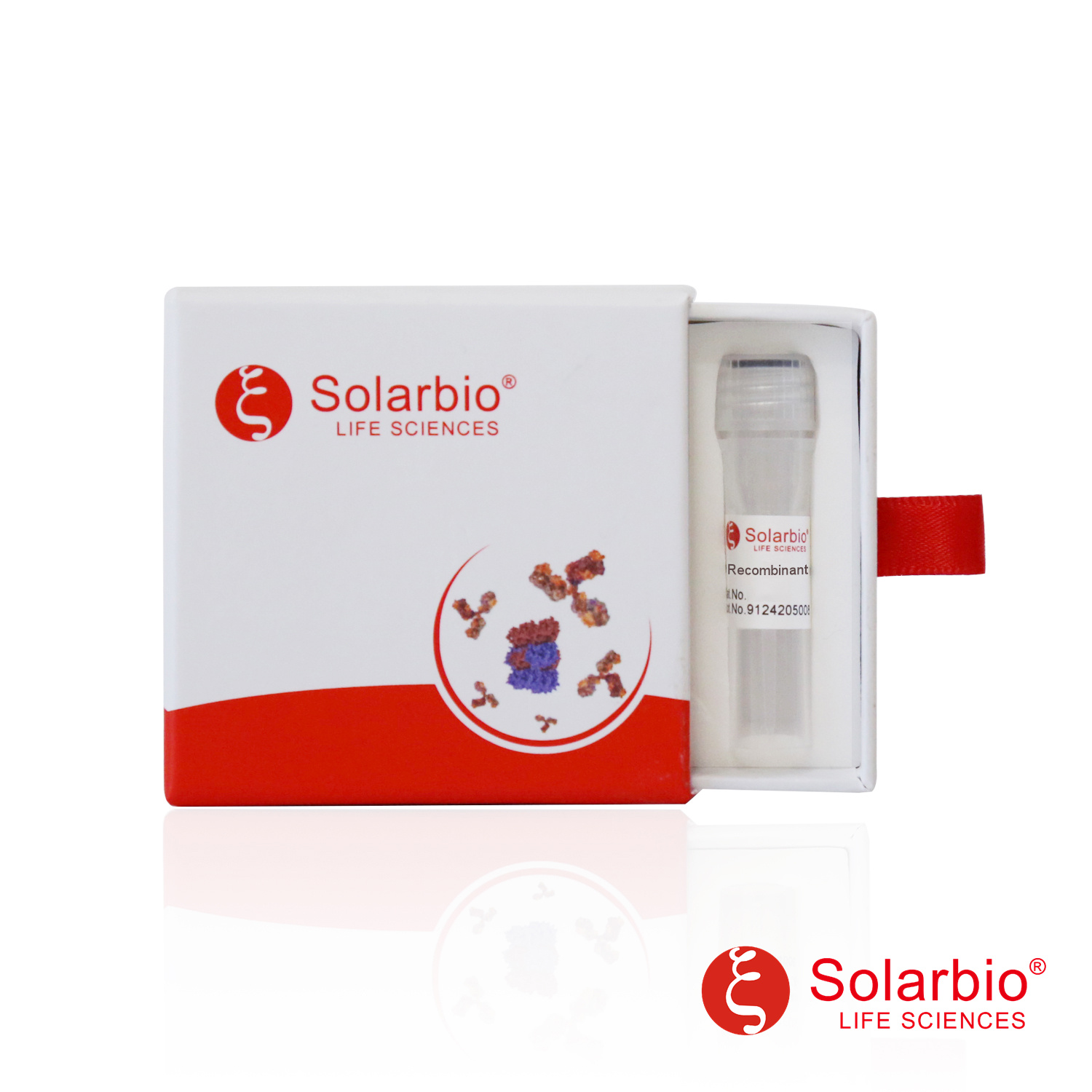| Gene Name |
UQCRQ |
| Synonyms |
Cytochrome b-c1 complex subunit 8;Complex III subunit 8;Complex III subunit VIII; |
| English Name |
Recombinant human UQCRQ protein |
| Full Name |
ubiquinol-cytochrome c reductase,complex III subunit VII,9.5kDa |
| Chinese Name |
细胞色素b-c1复合亚基8 |
| Appearance |
Powder: Lyophilized from a 0.2 μm filtered solution of 2-8M Urea, 20mM Tris-HCl, 150mM NaCl, 1mM DTT, PH7.2-8.0. |
| Purity |
≥85% by SDS-PAGE. |
| Storage |
Reconstituted protein solution can be stored at 4-7℃ for 1-2 weeks, stored at < -20℃ for 1 year. |
| Transport Condition |
The product is shipped at -20℃ temperature. Upon receipt, store it immediately at the temperature listed below. |
| Concentration |
1mg/ml by SDS-PAGE. |
| Swiss Prot |
O14949 |
| Gene ID |
27089 |
| Reactivity |
Human Mouse Rat (Bovine Orangutan) |
| Molecular Weight |
9.9kDa |
| Interval Range |
1-82aa |
| Background |
Component of the ubiquinol-cytochrome c oxidoreductase, a multisubunit transmembrane complex that is part of the mitochondrial electron transport chain which drives oxidative phosphorylation. The respiratory chain contains 3 multisubunit complexes succinate dehydrogenase (complex II, CII), ubiquinol-cytochrome c oxidoreductase (cytochrome b-c1 complex, complex III, CIII) and cytochrome c oxidase (complex IV, CIV), that cooperate to transfer electrons derived from NADH and succinate to molecular oxygen, creating an electrochemical gradient over the inner membrane that drives transmembrane transport and the ATP synthase. The cytochrome b-c1 complex catalyzes electron transfer from ubiquinol to cytochrome c, linking this redox reaction to translocation of protons across the mitochondrial inner membrane, with protons being carried across the membrane as hydrogens on the quinol. In the process called Q cycle, 2 protons are consumed from the matrix, 4 protons are released into the intermembrane space and 2 electrons are passed to cytochrome c. |
| Application |
Immunology research |
| Source |
E.coli |
| Purification Method |
NI-NTA affinity purification |
| Solvent |
Reconstituted protein solution can be diluted with distilled water. Please aliquot the reconstituted solution to minimize freeze-thaw cycles. (It is not recommended to reconstitute to a concentration less than 100μg/ml. Dissolve the lyophilized protein in distilled water.) |
| Endotoxin |
Not measured |
| Biological Activity |
N0 |
| Lable Information |
With a 6×His tag at the N/C-terminus. |
| Unit |
Piece |
| Specification |
10ug 50ug 100ug 1mg |


 English
English
 中文
中文

 Manual Download
Manual Download

